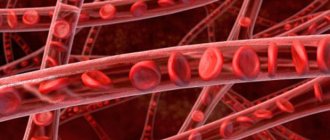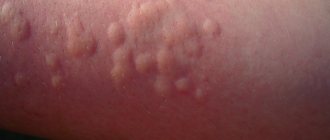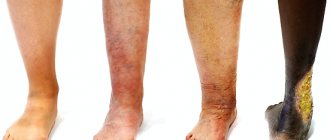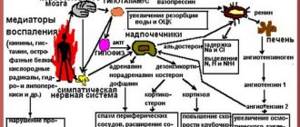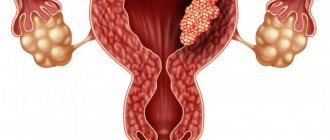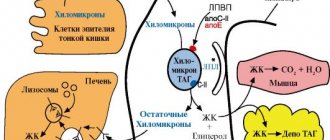In modern medicine, the concept of “shock” is defined as a set of reactions of the human body to the extremely strong influence of factors of exogenous and endogenous origin. Anaphylactic shock (AS) is an immediate reaction to an allergen entering the body.
At the same time, the reaction with anaphylactic shock is the most severe allergic reaction with the most severe course. This condition is dangerous because even with moderate and mild severity, minutes count, and without proper pre-medical and subsequent specialized medical care, anaphylactic shock can cause death.
Causes of anaphylactic shock
There is only one cause of anaphylactic shock – the entry of an allergen into the human body. Moreover, allergens that can provoke such a reaction are divided in medicine into four groups:
- poisons,
- food products,
- medicines,
- plants.
Poisons
A few decades ago, it was believed that anaphylactic shock could occur exclusively from poisons entering the body, mainly from snake and insect bites. Most often, in addition to reptiles, such a development of the situation was observed with the bites of wasps and bees, often numerous. But since recently other causes of AFS have increasingly begun to be recorded, the percentage of the development of such an allergic reaction from poisoning, in relation to the total number of anaphylactic shocks, has sharply decreased. This does not mean that people have become less likely to be bitten by hymenoptera and snakes - in absolute terms, the number of such cases remains at the same level.
Food products
The number of recorded APS resulting from contact or consumption of food products has increased significantly in recent years. This is explained by the growing volume of use of various fertilizers and products to improve the quality of products. Moreover, allergies with the subsequent development of anaphylactic shock can be caused by quite harmless, at first glance, things: wheat, milk, eggs, nuts. But in most cases, food additives, flavor enhancers and dyes cause a severe allergic reaction. So for your own safety, when choosing food products, you should give preference to natural names. As in the case of poisons, acute allergies with the subsequent development of anaphylactic shock can develop even after the first contact with the allergen, which is a sufficient incentive to be careful about new elements of your own diet.
Medicines
The development of AFS in recent years has increasingly been recorded with the use of medications, often very harmless at first glance. In medicine, a fairly extensive database has been collected, according to which an acute allergic reaction can be caused by drugs of the penicillin group, immune serums, and blood substitutes. What this is connected with remains a mystery, since the same penicillin has been known in medicine for a very long time.
To minimize the risk of developing anaphylactic shock caused by medications, it is especially important to strictly adhere to all doctor’s instructions and conduct skin testing of prescribed medications.
Plants
Ingestion of plant allergens quite often causes simple allergies. Many have experienced all the “delights” of poplar fluff or the flowering of pungently smelling plants. In principle, serious complications of an allergic reaction and the development of anaphylactic shock from plant allergens are quite rare, but the presence of an allergy to plants is an additional risk factor.
First aid for shock and other acute conditions
You should know that first aid is a set of urgent, simple actions and measures that must be carried out at the scene of an incident. This help can be provided both by strangers and by the victims themselves (self-help).
Often first aid helps save the patient’s life. This especially applies to situations where action must be taken immediately (bleeding, drowning, suffocation, carbon monoxide poisoning, etc.).
First aid includes three groups of measures.
- The first group includes the immediate cessation of external damaging factors (electric current, water, fire, chemicals).
- The second group is first aid.
- The third group is seeking help from the nearest medical facility.
To provide self- and mutual assistance, it is not necessary to have a first aid kit or any medications; the main thing is to be able to provide this assistance. You need to use the means at hand and know what to do in each specific case. Television, newspapers, and good books teach this. Therefore, if you have the opportunity to learn something useful, study - it will never be superfluous. Also read more about first aid for shock.
Treatment of bronchial asthma in children must be comprehensive. The first thing the attending physician must achieve is the restoration of bronchial patency.
Anaphylactic shock: symptoms
The symptoms of APS develop over a certain period of time, which for convenience is divided into three periods:
- period of harbingers,
- peak period
- period of recovery from shock.
Precursor period
During this period, a person first of all experiences a sharp reaction at the site of the allergen. It is expressed in the form of swelling, edema and itching when exposed to external agents, or in the form of severe pain, nausea, vomiting and difficulty breathing when the allergen enters the body. In addition, a harbinger of the development of anaphylactic shock is a sharp drop in blood pressure, a feeling of discomfort and anxiety in a person.
High period
During the next period of development of anaphylaxis, the patient's blood pressure continues to fall, loss of consciousness is very likely, cyanosis of the limbs and lips, cold sweat, tachycardia and noise when breathing appear. This is where qualified medical care plays a critical role, which will stop the further development of APS.
Period of recovery from anaphylactic shock
The final stage of anaphylaxis is the longest. It can last for several days. During this period, patients continue to feel general weakness, apathy, and lack of appetite. At the same time, the symptoms of anaphylactic shock characteristic of the first two periods gradually begin to disappear. Consciousness comes to a person.
Symptoms:
Traditionally, the clinical picture of anaphylactic shock is divided into 3 forms: 1. The rapid form occurs 1-2 seconds after the administration of the allergen. There is a loss of consciousness, dilation of the pupils (miosis), lack of reaction of the pupils and no light. Blood pressure decreases, breathing becomes impaired, and heart sounds cannot be heard. Death in this form occurs within 8-10 minutes 2. The severe form occurs 5-7 minutes after the allergen is administered. Characterized by a feeling of heat, difficulty breathing, dilated pupils. Worrying, there is a drop in blood pressure. 3. The average form of anaphylactic shock develops 30 minutes after the introduction of the allergen. There is an allergic rash on the skin. The average form is characterized by the following options: A. Cardiogenic with pulmonary edema B. Asthma-like with bronchospasm, laryngospasm, laryngeal edema. B. Cerebral, which is characterized by impaired consciousness, convulsions. D. Abdominal with symptoms of “acute abdomen”.
Causes of death in anaphylactic shock: 1. Acute cardiac and respiratory failure 2. 3. Brain edema 4. Hemorrhage in the brain, adrenal glands.
Classification of anaphylactic shock by severity
In addition, anaphylactic shock is divided into three types, depending on the severity of the course. Each of them is characterized by certain symptoms and the difficulty of relieving the shock reaction. For clarity, we present a description of the severity of anaphylaxis in the form of a table:
| Form of AFS flow | Lightweight | Average | Heavy |
| Symptoms | Itching at the site of allergen damage, skin rash, burning sensation of the skin, possible Quincke's edema. At the same time, a person’s condition allows him to complain about symptoms, which makes it possible to provide timely assistance. | Mild symptoms include suffocation, cold sweat, heart pain, and dilated pupils. In some cases, the development of anaphylactic shock may be accompanied by nasal, gastrointestinal and uterine bleeding. Often a person experiences problems with speech and loses consciousness, which is why he cannot notify loved ones about his condition. | In severe form, anaphylactic shock develops very rapidly. Seconds count. Within a minute after being hit by an allergen, a person loses consciousness, blood pressure is practically undetectable, and the pulse is weakly palpable. Heavy breathing with a characteristic prolonged exhalation, convulsions, foam at the mouth, and cyanosis of the entire skin are observed. The immediate lack of emergency assistance leads to death. |
| Blood pressure level | 90/60mmHg | 60/40mmHg | Not determined. |
| Duration of the precursor period | Up to half an hour, which allows you to weigh the situation and provide the necessary assistance. | The period of precursors is rapid, lasting no more than five minutes. | Up to one minute. |
| Duration of unconsciousness | In most cases, there is a fainting state with immediate awakening. | The victim remains unconscious for up to half an hour. | The patient immediately loses consciousness and does not come out of this state. |
| Difficulty in relieving AFS | With the proper level of emergency medical care, treatment of anaphylaxis is quick and effective without significant consequences. | Effective emergency care is key. At the same time, overcoming anaphylaxis is slow. After leaving the AFS, the patient requires medical supervision for a long period. | Even high-quality emergency care does not produce results in all cases. The fatality rate is extremely high. |
Video on the topic
Anaphylactic shock is an acute systemic allergic reaction of an immediate type, developing as a result of parenteral introduction of an allergen into the body against the background of sensitization. Anaphylactic shock is characterized by rapidly developing peripheral vascular collapse, increased vascular permeability, smooth muscle spasm, and central nervous system disorder. Anaphylactic shock can develop when drugs are introduced into the body (antibiotics, antitoxic serums, sulfonamides, analgesics, vitamins, hormones), due to the consumption of certain foods, insect bites, specific diagnostics and hyposensitization.
The basis of the pathogenesis of anaphylactic shock is type I immune damage caused by antibodies related to immunoglobulin E. As a result of the release of mediators, vascular tone decreases, vascular permeability increases, smooth muscle spasm develops, and as a result, collapse, edema of the larynx, lungs, and brain develops. spasm of the bronchi, intestines, etc.
The severity of the clinical picture of anaphylactic shock varies from mild symptoms such as urticaria, mild skin itching, general weakness, feelings of fear to severe symptoms with fulminant development of acute vascular collapse and death.
Most often, anaphylactic shock is characterized by a sudden, violent onset within a few seconds. The type of allergen does not affect the clinical picture and severity of shock. Clinical manifestations of anaphylactic shock are caused by a complex set of symptoms and are determined by a variety of mechanisms involved in the reaction: spasm of intestinal smooth muscles (spasmodic pain, diarrhea, vomiting), bronchi (suffocation). With severe edematous syndrome on the mucous membrane of the larynx, a picture of asphyxia may develop. Hemodynamic disorders can be of varying severity - from a moderate decrease in blood pressure to severe vascular collapse with prolonged loss of consciousness (up to 1 hour or more). The patient's appearance is characteristic: severe pallor, sharpened facial features, cold sweat, and sometimes foam at the mouth. Due to ischemia of the central nervous system and cerebral edema, convulsions, paresis, and paralysis are possible. An ECG taken during and after anaphylactic shock (within a week) shows disturbances in heart rhythm, a shift in the 8-T interval, and conduction disturbances.
Treatment for anaphylactic shock is aimed at removing the patient from the state of asphyxia, normalizing hemodynamics, relieving contractures, smooth muscles, reducing vascular permeability, and stopping further entry of the allergen into the body.
Emergency care for anaphylactic shock: algorithm
The symptoms of anaphylactic shock are quite clear and knowing them, one can determine this diagnosis in the patient with a fairly high degree of confidence. The list of actions to take when detecting a victim with anaphylaxis is quite wide, but knowing it and accurately following the emergency care algorithm for anaphylactic shock, the chances of waiting for doctors and saving the victim’s life increase significantly.
First of all, in case of anaphylactic shock, you need to call an ambulance, indicating to the dispatcher the suspected diagnosis and recorded symptoms. After this (ideally, one person calls an ambulance, and the second already provides first aid), the victim needs to be laid on a flat, hard surface, legs raised and head turned to the side. This will prevent you from choking on vomit. If a patient with APS is indoors, open the windows for active ventilation.
We check breathing and pulse. Breathing is determined by the movements of the chest. If it does not fixate, we bring a mirror to our mouth, which should fog up. If there is no breathing, you need to start doing mouth-to-mouth or mouth-to-nose artificial respiration using a damp piece of cloth. At the same time, we check for a pulse. It is best felt at the wrist, carotid and femoral arteries. If there is no pulse, you need to start doing chest compressions.
In addition, along with resuscitation measures, it is necessary to stop, if possible, the effect of the allergen on the body: squeeze out the insect sting and apply a tourniquet above the bite site to prevent the spread of the allergen through the circulatory system. Ice should be applied to the site of the allergen lesion, if it is on the skin. In most cases, such pre-medical therapy will make it possible to save time, which is extremely expensive during anaphylactic shock, and transfer the patient to the hands of a medical team.
Differential diagnosis:
A symptom of anaphylactic shock is the occurrence immediately after the administration of the drug or during its administration of general weakness, severe headache, acute pain in the chest, abdominal pain, pallor of the mucous membranes and skin. To distinguish the onset of development of antephylactic shock from loss of consciousness, it should be remembered that with anaphylactic shock, consciousness is initially preserved and observed. Quincke's edema and respiratory failure may occur quickly. Skin cyanosis appears. The patient is restless and complains of itching. Death may also occur as a result of kidney failure.
First aid for anaphylactic shock
The first resuscitation action for AFS is the immediate administration of adrenaline, an antiallergic drug with immediate effect, into the body. To slow down the absorption of the allergen, it is used to inject the bite site (if the allergen is reptile or insect venom). At the same time, adrenaline is injected into the opposite limb. An effective method for severely difficult breathing is also the injection of adrenaline under the root of the tongue. However, all these injections must be carried out very slowly so as not to cause arrhythmia.
Laryngeal edema, which often accompanies anaphylactic shock, is overcome by the above-mentioned administration of adrenaline. But if the injection does not produce results and an increase in respiratory failure is observed, intubation, conicotomy or tracheostomy are performed - procedures to open the airways to ensure air access.
Further medical care for anaphylaxis involves a standard set of resuscitation actions: administration of glucocorticoids, therapy with antihistamines that do not lower blood pressure and do not cause an allergic reaction (suprastin and diphenhydramine), and inhalation of humidified oxygen.
In parallel with this, diagnostics should be carried out in a medical institution aimed at identifying the allergen that caused APS. This includes a number of specific studies:
- Patch test – skin patch testing;
- blood test for immunoglobulin E, which is closely related to the mechanism of atopic allergic reactions;
- skin and provocative tests.
Together with a consultation with an allergist, the results of these tests will allow you to accurately determine the allergen and draw up the correct scheme for further restorative therapy.
Signs of anaphylaxis
To properly provide first aid for anaphylactic shock, you need to know its manifestations:
- Changes in mood, which can be expressed by excitement or depression, fear of death.
- Feeling hot.
- The pain syndrome is cramping in the abdomen, squeezing in the heart, pulsating in the head.
- Rapid swelling of the face, lips, tongue, nose, ears, upper limbs.
- Itching, rash resembling hives or redness of the dermis.
- Watery eyes, red eyes, runny nose, dry mouth.
- Dry or barking cough, bronchospasm, difficulty breathing.
Further, the following clinical picture develops:
- The pressure drops quite sharply.
- The heart rate increases and can reach 160 beats per minute, while the pulse is barely audible.
- Loss of consciousness.
- Cold sweat.
- Convulsive phenomena are possible.
- Pallor of the dermis.
- Blueness of nails, tongue, lips.
If emergency medical care is not provided for anaphylactic shock at this stage, the likelihood of death increases.
Consequences of anaphylactic shock
Anaphylaxis, even after timely and high-quality treatment, quite often causes chronic disorders in the body that make themselves felt to a person over a long period of time. In particular, the following consequences are most often recorded:
- persistently low blood pressure;
- chronic pain in the heart area that occurs due to prolonged ischemia;
- chronic fatigue, lethargy and lethargy.
In addition, anaphylactic shock can cause further neuritis, myocarditis, diffuse damage to the central nervous system, as well as irregular pain in the joints, chest and abdomen, nausea and vomiting. All these consequences are eliminated with the help of drug therapy, for which the doctor must be informed that you have suffered anaphylactic shock.

